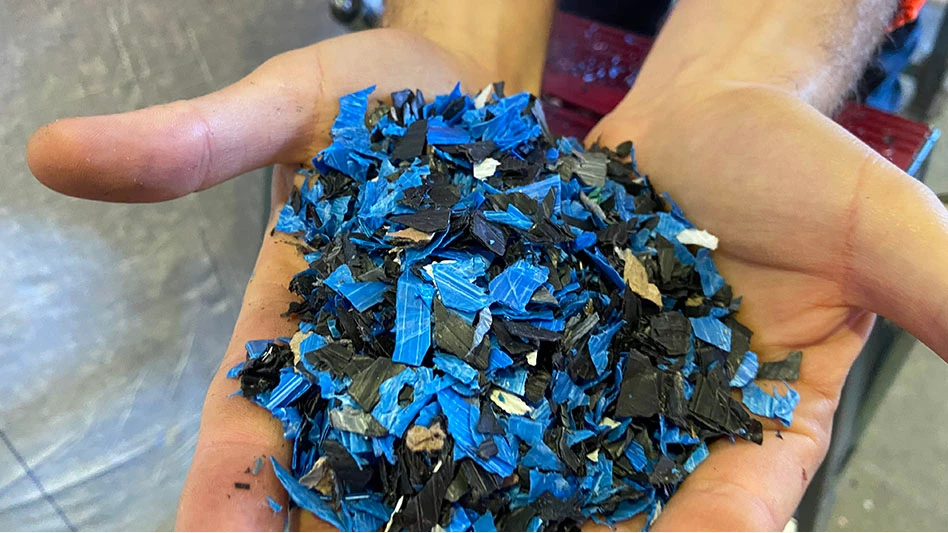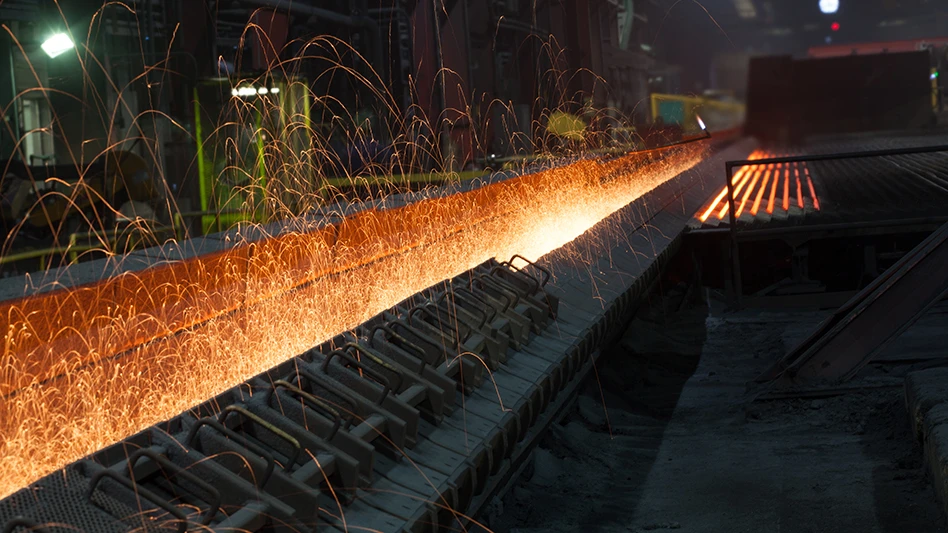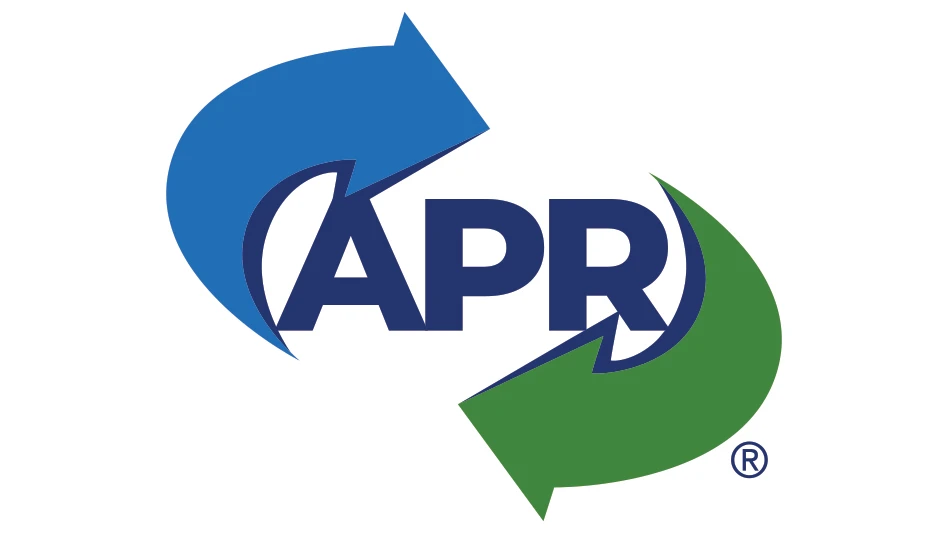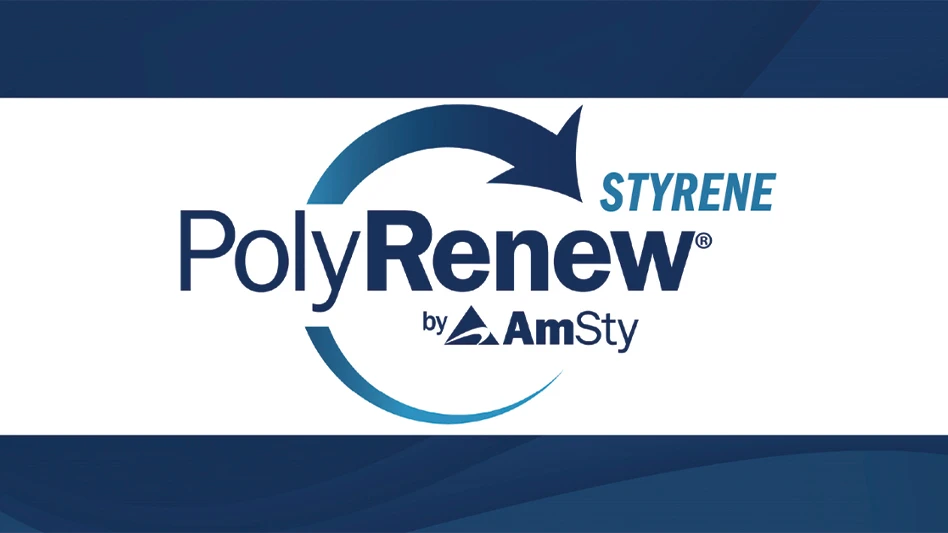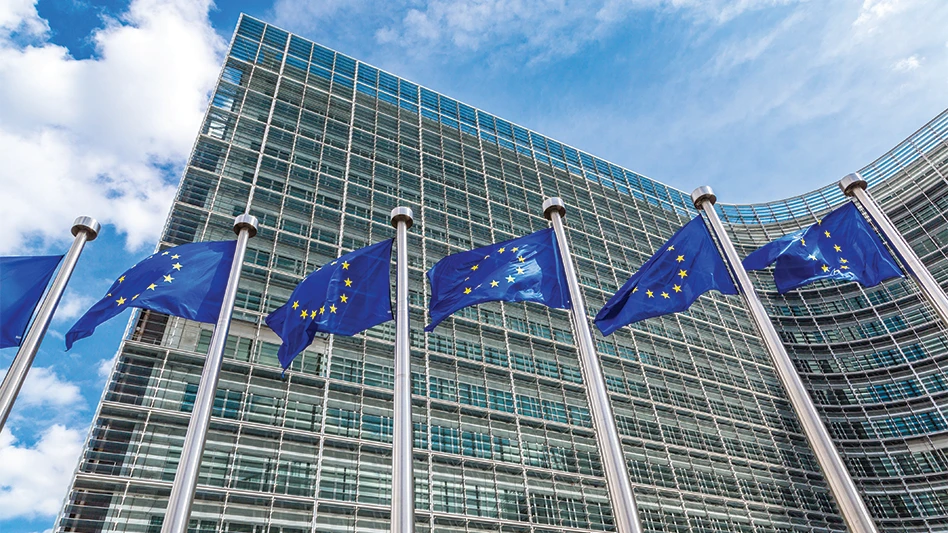
Scrap metal processors, brokers and traders are not the single largest or biggest ticket users of global metals terminal exchanges such as COMEX (part of the Chicago-based CME Group Inc.) and the London Metal Exchange (LME).
To some extent, scrap traders must learn to navigate the rules and procedures catered to please not only larger players in the global metals and minerals market but also the banks and investment funds investing in the price movements of metals.
However, some nonferrous scrap traders have been loyal to the LME in part because that exchange’s system has had cash settlement and payment terms that are perceived as easier for medium-sized players such as scrap traders.
That loyalty was tested earlier this year as the LME undertook a consultation process that scrap traders feared would have meant the end of settlement terms that have caused them to favor the LME.
Following the money
The LME was underway with its consultation process when its CEO Matthew Chamberlain took part in a discussion with several nonferrous traders in March as part of the online series hosted by the Brussels-based Bureau of International Recycling (BIR) called “The Challenge.”
Of most interest to the traders was that the LME, as it did in 2017, was again considering whether to switch from its current contingent variation model (CVM) for traders taking a hedging position to a realized variation model (RVM), which is widely used in other trading exchanges.
To outsiders, the one-letter change in acronyms could seem an arcane matter left to bookkeepers. However, the two traders who took part in “The Challenge” discussion stressed to Chamberlain that any such switch is viewed unfavorably by buyers and sellers of material who hedge with the LME.
The CVM, which requires only a monthly settlement of dollars into or out of an account based on a hedged position’s outcome, is considered far less labor-intensive and friendlier toward cash flow considerations than the RVM daily settlement requirements, the two traders said.
“For the most part, I don’t know too many people in the trade, the physical market, who want to deal with RVM and settlements on a daily basis,” said Mark Sellier, president of Hong Kong-based Global Metals Network. Sellier also urged Chamberlain to consider that the 144-year-old LME was founded as a risk management tool for the metals industry and that remains a “core mission.”
Murat Bayram, a Hamburg, Germany-based managing director for Europe with United Kingdom-based EMR Ltd., credited Chamberlain for having connected well with recyclers and smelter operators since being appointed LME CEO in 2017. He also echoed Sellier’s concerns, saying recyclers “would lose the ability to hedge the way we do” with RVM. “I and my colleagues in the industry are quite worried about it,” he added.
Sellier, Bayram and “The Challenge” moderator, Michael Lion of Hong Kong-based Everwell Resources Ltd., said the switch to RVM is considered favorable to large financial institutions and fund managers, often looked upon by the metals sector as speculators who wish to treat base metals as an “asset class,” Lion added.
Chamberlain said he understands why the physical market likes CVM, but the LME “needs to make sure we’re doing the right thing” by considering RVM and “not just doing what we’ve always been doing. The LME board is going to look at that in its entirety. We don’t have a preconceived notion.” He added that people in the risk management community have a favorable view toward the daily settlement or mark-to-market model used by other exchanges.
Bayram also referred to an earlier meeting Chamberlain and other LME executives had with representatives of Germany’s metals trade association Verband Deutscher Metallhändler (VDM), who provided similar feedback in February on the potential of a CVM to RVM switch.
A subsequent Reuters report about that meeting says using the RVM model would require small and medium-sized companies in Germany “to lock up more capital” and quotes VDM as saying, “The LME ... does not have to simplify its structure to attract business from [large] investors, who we think are well-equipped to handle complexity.”
Chamberlain acknowledged having heard the message loud and clear. While noting that the LME is currently the predominant metals trading platform in Europe because it is the only one based there, he quipped, “There isn’t a competing metals exchange in Central Europe, [but] you could argue if we proceed with plans to mark to market, maybe there could be.”
Fortunately for scrap traders, in early June the LME announced some of the conclusions it had reached from its most recent discussion paper and consultation process. Retaining the CVM settlement method—in what the LME calls the medium term—was one of those conclusions.
“The current contingent variation margin system can be helpful for smaller physical users as it facilitates the provision of credit from members to their clients,” that paper notes, echoing the feedback it had received from the scrap market.
The LME notes, though, that its deeper-pocketed users favored change. “Smaller physical clients and Category 1 members broadly supported the maintenance of CVM, while larger physical clients, financial clients and Category 2 members generally supported a transition to the market-standard RVM model,” the LME writes.
The LME could seek a hybrid model that can “recreate the cash flows of a CVM model for RVM contracts, which could support the traditional brokerage community in the provision of credit to their smaller physical clients.”
Contacted in September by Recycling Today, Lion says of a hybrid model, “Undoubtedly, some creative solutions are not impossible.” He adds, “These could be far less supportive to recycling hedgers than the current and (thankfully for the foreseeable future) maintained CVM method, and thus we are much appreciative that the LME has understood—and by their decision supported—our concerns.”
Another potential change looming for LME customers is the fading away of its traditional in-person trading floor (the Ring) to be replaced entirely by electronic bids and transactions.
Ringing in the old, for now
The BIR panelists, who were the midst of seeing the Ring temporarily suspended because of COVID-19 restrictions, also discussed the fate of the Ring. Similar to the settlement model switch, panelists fear a change to electronic trading only will favor fund managers and institutional investors over physical metal buyers and sellers.
Sellier said trading floor Ring prices reflect “real-world pricing and demand” and getting away from that is a “danger.”
Lion also pointed to a potential for “distortion” by “other players” on the LME who see the exchange as an “asset platform.” He added, “We saw that in the earlier commodity super cycle, [and such investors] are very fickle people,” managing money that can “go away like the morning dew” when the metal commodities “asset class” falls out of favor.
According to Reuters, Germany’s VDM was no less sparing in its criticism of closing the open-outcry Ring trading venue, writing, “The forcing of trades on to the electronic system is questionable as trading there is heavily influenced by algorithmic and high-frequency trading.”
In early August, processors, traders and consumers of nonferrous scrap learned of the near-term fate of the LME Ring when the exchange sent out a press release about its reopening in early September.
However, one day after the LME’s Aug. 9 announcement, Reuters reported the Triland Metals subsidiary of Japan-based Mitsubishi would be ending its presence in the LME ring. That prompted renewed speculation as to the longer term fate of the Ring.
In its early August press release, LME announced that, following its consultation period with members, LME Official Prices (used as a contract benchmark) will be established in its London trading ring again (starting in early September), while Closing Prices (used to calculate margins by some users) will continue to be determined electronically.
The LME says, “This optimal structure caters for both smaller physical customers—who use Official Prices in their contracts and overall prefer these to be determined in the Ring—as well as financial and larger physical users, who focus primarily on Closing Prices and generally favor electronically derived pricing.”
The LME consultation on a split pricing approach was launched in June following a discussion paper issued on the LME’s market structure, which included the decision to determine Closing Prices electronically on a permanent basis. The LME says it received 12 consultation responses, mostly from what it calls Category 1 ring-dealing members, that “showed broad support for the specific proposal of determining Official Prices in the Ring” once COVID-19 restrictions are lifted.
“While fully acknowledging that many Category 1 members would have preferred Closing Prices to also return to ring-based price discovery, we’re pleased with the level of support shown for maintaining Official Prices in the Ring and look forward to welcoming members’ Ring teams back in September,” Chamberlain said.
“We believe this split pricing model is the best outcome for the market as a whole, allowing increased participation and transparency in the Closing Price process while enabling different user groups to access and take part in pricing in the way that best suits their business,” he said.
The retirement of Triland Metals from the Ring, however, will leave just eight metals industry companies participating in Ring trading, under a charter that states if the number of participants drops to six, electronic methods may be used for all types of pricing.
The reopening of the Ring in September is welcomed in the short term by some traders, but a sense of the inevitability of electronic pricing also is a prevailing sentiment. “This is a kind of compromise,” states one trader of scrap exported from Europe, referring to the electronic-only option originally proposed by the LME.
He continues, “However, it does appear to indicate the eventual outcome will be the end of the Ring, with one Ring trader having already dropped out voluntarily.”
John Browning, who is based in Shanghai with BANDS Financial, wrote in June of this year, “I fear that the Ring will open in September, but its foundations will have crumbled by Christmas. It is not wishful thinking that will keep the LME Ring open but that there is a profit-creating rationale for its participants, and at the moment that is by no means clear.”
In his Aug. 11 email to clients, Browning adds, relative to the Triland announcement, “No doubt the management at Triland has made a sober assessment of the profit-creating rationale for its continued participation in the Ring and found it wanting. However, the same calculation is available to the remaining eight, and the LME is no doubt taking the temperature as to their continued participation.”
The metals trader Recycling Today contacted sees this as an evolution working in favor of banks and fund managers, not sellers, buyers or producers of metal. Electronic pricing only, he says, “will lead to less trade influence on prices that are used to ‘price’ physical trades, and the market will be more influenced by algorithmic traders—not fundamentals—until the algorithmic traders move on to the next market to manipulate.”
Commodity exchange services around the world have moved to electronic pricing methods to attract more business from financial institutions and funds, with the LME seemingly being the last to maintain a trading floor for physical metal buyers and sellers.
If the LME Ring winds down in late 2021 as predicted by Browning and feared by some traders, “I believe it will level the playing field for LME competitors as the LME won’t be able to claim a differentiation from them,” the trader says.
Get curated news on YOUR industry.
Enter your email to receive our newsletters.
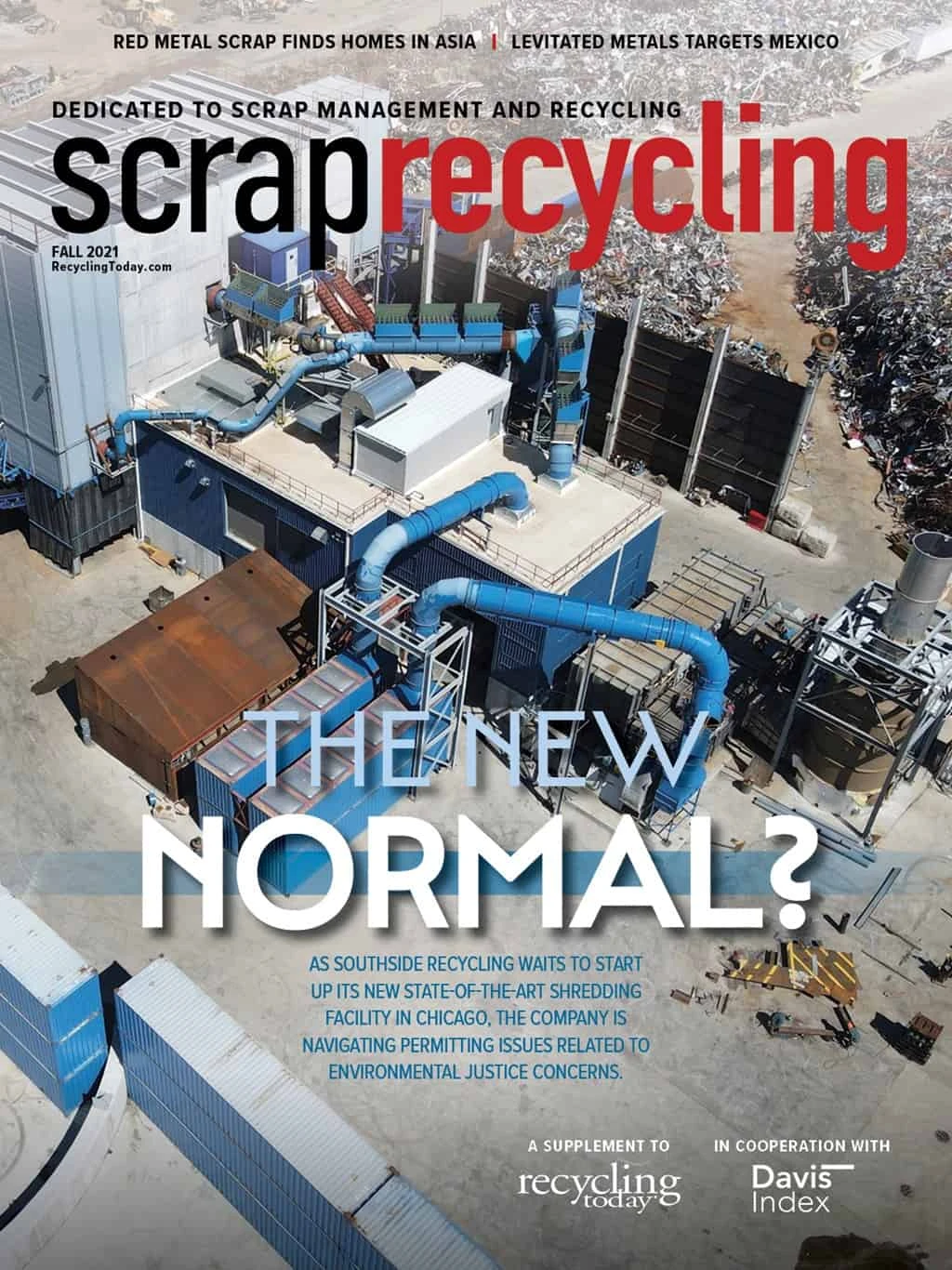
Explore the Fall 2021 Scrap Recycling Issue
Check out more from this issue and find your next story to read.
Latest from Recycling Today
- AF&PA report shows decrease in packaging paper shipments
- GreenMantra names new CEO
- Agilyx says Styrenyx technology reduces carbon footprint in styrene production
- SABIC’s Trucircle PE used for greenhouse roofing
- Hydro to add wire rod casthouse in Norway
- Hindalco to invest in copper, aluminum business in India
- Recycled steel price crosses $500 per ton threshold
- Smithers report looks at PCR plastic’s near-term prospects

